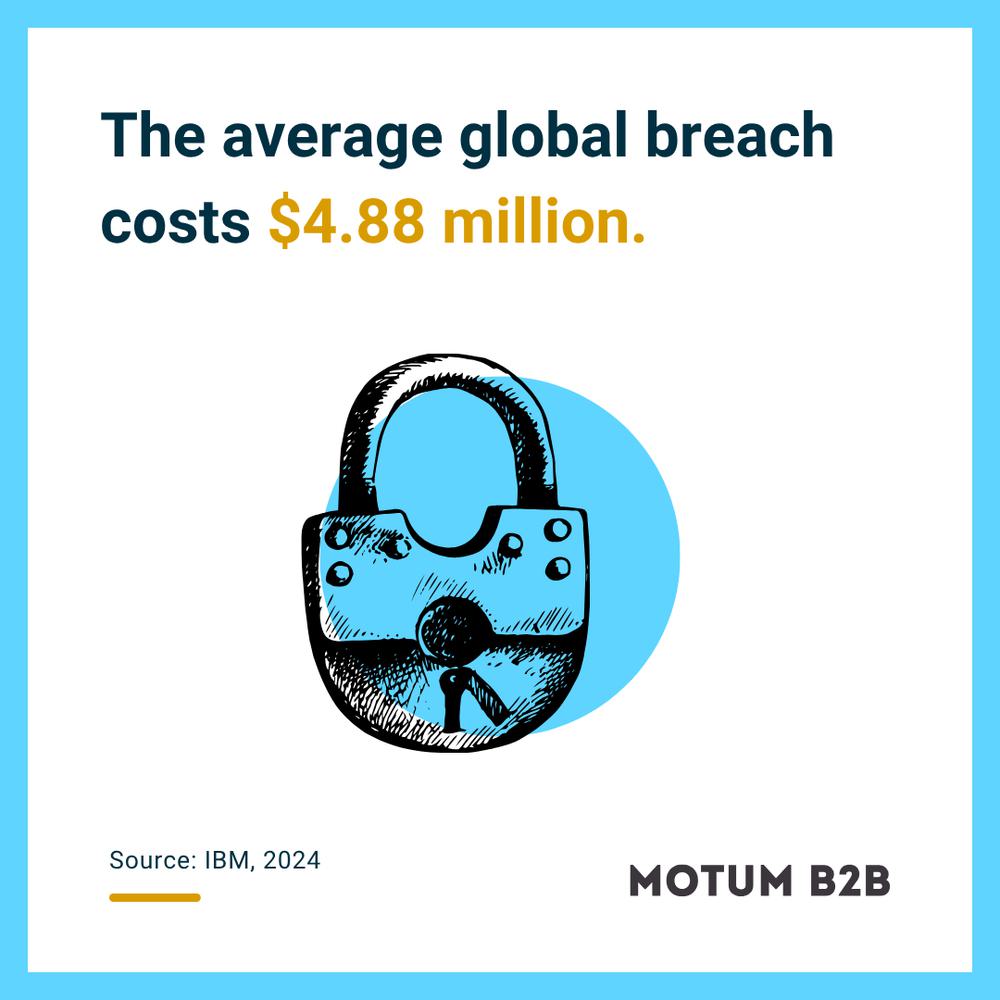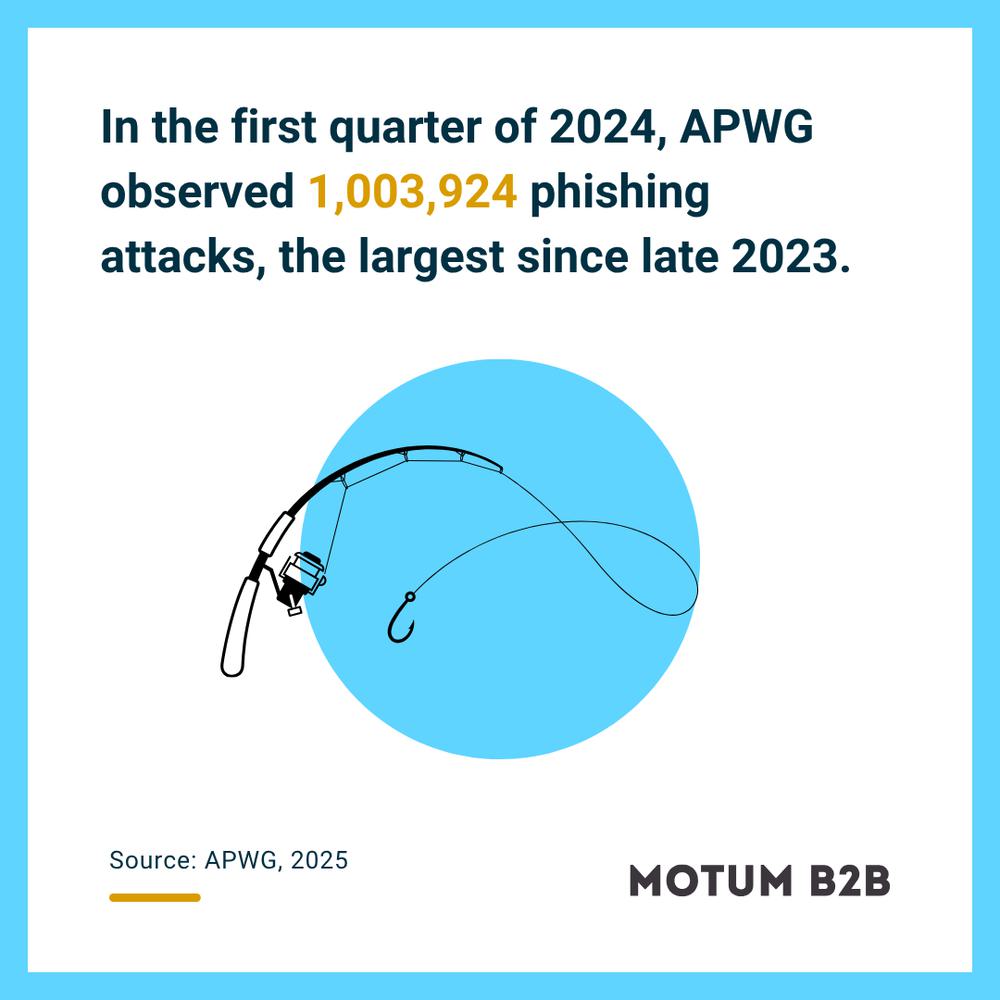Is your B2B website prepared for a cyberattack?
In 2025 and beyond, securing your website isn't just a luxury — it’s a must. Our DevOps Cloud Engineer, Danny Yim, talks about what you can do to elevate your cybersecurity.

Did you know that, according to a study from Microsoft, its customers now face 600 million attacks daily from both cybercriminals and nation-state actors, or that the average global data breach now costs more than $4 million? Or that 35% of small organizations currently believe their cyber resilience isn’t up to scratch?
Danny Yim, our DevOps Cloud Engineer, says, “Cybersecurity is more important than ever because there are just so many cyber threats, and a lot of targeted attacks.”
Here’s what you should look out for and how you can prepare your B2B website against cyber-threats.
What exactly is a cyberattack?
The Canadian Centre for Cyber Security defines a cyberattack as “the use of electronic means to interrupt, manipulate, destroy, or gain unauthorized access to a computer system, network, or device.”
That covers it, but it’s worth keeping in mind that a cyber threat can happen anywhere, at any time. It can be delivered via email, at an ecommerce website checkout, or as something a lot more complicated and harder to spot.
"Typically, they're trying to break into the back-end system to access data,” Danny says. “With popular websites, they’re likely trying to break into databases and servers to grab product and customer data. If the website has something like a shopping cart feature, they can try to steal credit card information or transaction history.”
It’s also important to remember that cyber attackers are getting better at what they do. That Microsoft stat we shared above is an increase on previous years and things like geopolitical unrest, the movement of data from physical servers to the cloud, and the rise of AI are all unlocking opportunities for attackers to elevate their efforts.
In short? Attackers are getting smarter, faster, and working harder to break into your website.

So, what can you do about it?
We’ll be the first to admit that the outlook appears grim, but with the right tools and approach, you’ll be in a strong position to keep your data in and attackers out.
Take a zero-trust approach
Danny talks about the industry term “zero-trust.” It’s the practice of taking caution with everything and anything your business receives, and taking a strict no-trust policy to ensure safety and security remains paramount.
The Canadian Centre for Cyber Security continues to say that, “As users, information, and services are dispersed across various locations, there are no longer defined perimeters around organizations’ resources. Organizations can no longer depend on conventional perimeter-based defence to protect their critical systems which makes taking a zero-trust approach more important now than ever before.”
While that approach focuses on creating a security framework, Danny says that it can go beyond that to shape the mindset of your employees.
“If you get an email from your security provider, you can’t trust that email,” Danny says. “You always have to be cautious that someone could be trying to access your servers or break into something.”
If someone at your company does encounter a phishing email (more on that soon), you shouldn’t just delete it and carry on. Instead, your business should develop a system for both flagging the email for investigation and having an action plan if they feel their data has been compromised.
Empower your employees
The more your team knows about threats, the better prepared they will be to spot them.
Take phishing as an example. As an incredibly common form of cyberattack, phishing tries to trick people into offering passwords, usernames, credit card details, or other information through communications like emails, phone calls, and texts. In the first quarter of 2024, the Anti-Phishing Working Group (APWG) observed more than a million phishing attacks, the largest number since late 2023.
Putting an education plan in place or training courses for employees to spot, report, and deal with these attacks can make a big difference to the overall safety of your brand.

Choose the right solution
No matter how well you educate your employees, the threats they encounter in their inboxes are only a fraction of potential threats, and a lot of what happens goes on behind the scenes. That’s why doing your research and choosing the right cybersecurity solutions is so important.
Danny says the first necessity is a strong threat detection system, like an antivirus, that uses machine learning to detect incoming issues. “Attack mechanisms change every day,” he says. “So we need to use AI machine learning to detect those changes. It’s behaviour-based threat detection and it’s mandatory to have.”
He also notes the necessity of switching from HTTP to HTTPS, which is an important step in getting that little padlock to appear next to a URL, showing customers that a site is secure before they continue to purchase. “What you see online and what you download from the internet isn’t encrypted by default,” Danny explains, “but with HTTPS, it is.”
Lastly, he talks about the importance of firewalls, which act as a first line of defense for a website. They choose who to let in and out, depending on security preferences, and are designed to protect your business from outside threats.
Though it may not be a possibility for every project, Danny notes that if you can build cybersecurity into a site from the beginning, that’s what you should be doing. It’s easier and better to build it into a project’s start than add it on later.
Hire someone dedicated to cybersecurity
Naturally, completing all of this on your own is tough, and there are a lot of nuances and intricacies that go into keeping your website airtight.
To stay on the cutting edge of how threats are evolving, Danny advises having someone on your team dedicated to recognizing, stopping, and managing threats. Besides, it’s not just your data on the line.
“If one of your websites gets hacked, it’s a huge loss to your reputation,” he says. With 63% of consumers believing most companies aren’t transparent about how their data is used and 48% parting ways with a brand over privacy concerns, research tells you how much is at stake, and how important it is to get cybersecurity right.